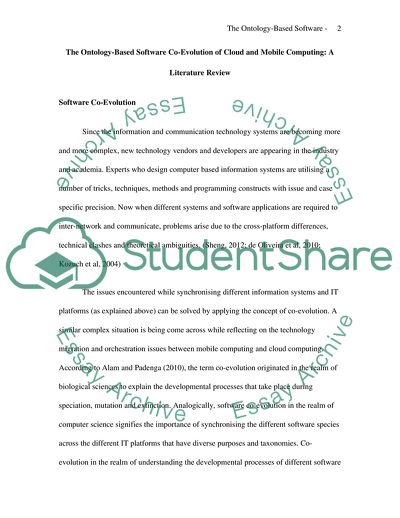Cite this document
(The Ontology-based Software Co-Evolution of Cloud and Mobile Computing Literature review Example | Topics and Well Written Essays - 2750 words - 2, n.d.)
The Ontology-based Software Co-Evolution of Cloud and Mobile Computing Literature review Example | Topics and Well Written Essays - 2750 words - 2. https://studentshare.org/information-technology/1792286-the-ontology-based-software-co-evolution-of-cloud-and-mobile-computing
The Ontology-based Software Co-Evolution of Cloud and Mobile Computing Literature review Example | Topics and Well Written Essays - 2750 words - 2. https://studentshare.org/information-technology/1792286-the-ontology-based-software-co-evolution-of-cloud-and-mobile-computing
(The Ontology-Based Software Co-Evolution of Cloud and Mobile Computing Literature Review Example | Topics and Well Written Essays - 2750 Words - 2)
The Ontology-Based Software Co-Evolution of Cloud and Mobile Computing Literature Review Example | Topics and Well Written Essays - 2750 Words - 2. https://studentshare.org/information-technology/1792286-the-ontology-based-software-co-evolution-of-cloud-and-mobile-computing.
The Ontology-Based Software Co-Evolution of Cloud and Mobile Computing Literature Review Example | Topics and Well Written Essays - 2750 Words - 2. https://studentshare.org/information-technology/1792286-the-ontology-based-software-co-evolution-of-cloud-and-mobile-computing.
“The Ontology-Based Software Co-Evolution of Cloud and Mobile Computing Literature Review Example | Topics and Well Written Essays - 2750 Words - 2”. https://studentshare.org/information-technology/1792286-the-ontology-based-software-co-evolution-of-cloud-and-mobile-computing.


